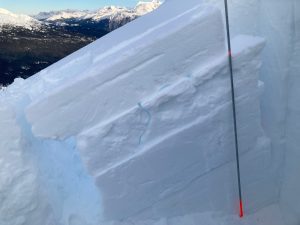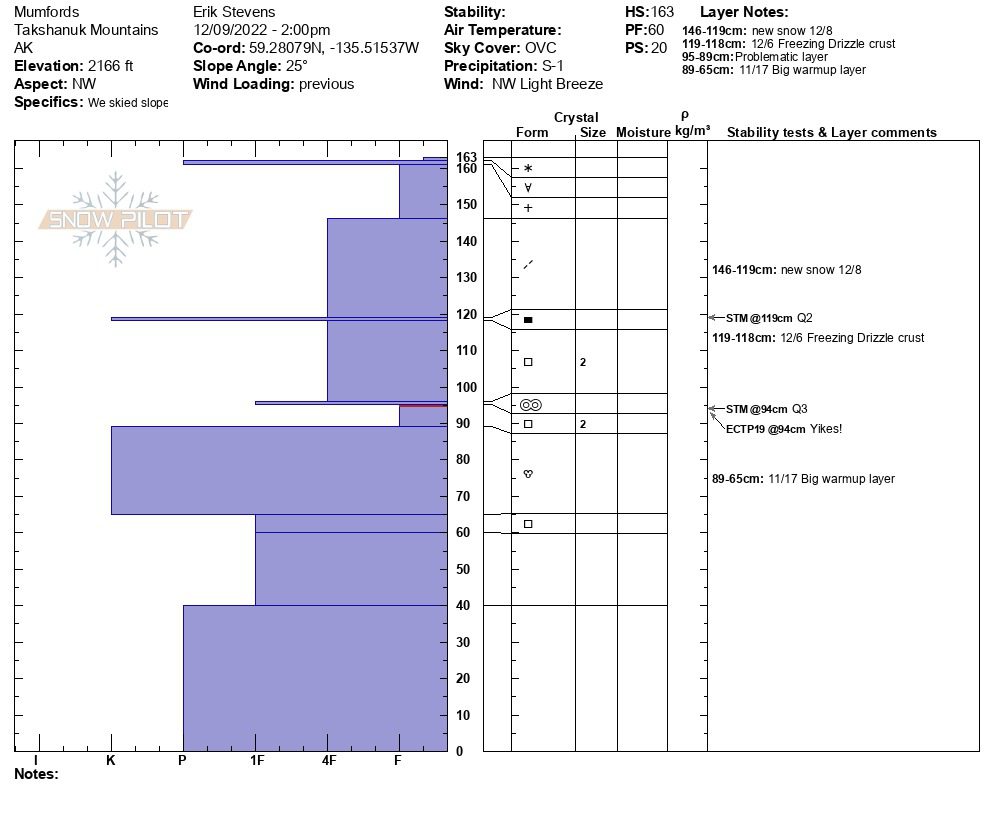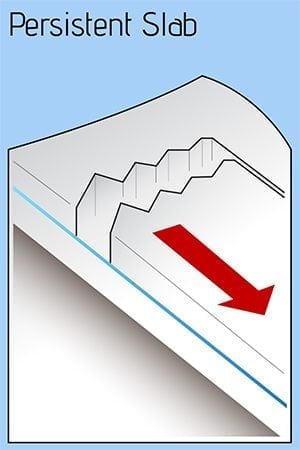Haines Avalanche Center
Above 2,500ftModerate
1,500 to 2,500ftModerate
Below 1,500ftLow
Degrees of Avalanche Danger
Avalanche Problems
Problem 1
The Bottom Line: Warming temperatures and precipitation will increase avalanche danger. In areas with deep new snow, you may be able to easily trigger surface soft slabs. Use care to avoid terrain traps where even small surface slides can pile up deep. Lower in the snowpack, warming temperatures are adding stress to our persistent weak layers. The risk of deep, deadly avalanches remains, and you should exercise extra caution and keep a wide safety margin. Travel one at a time to minimize exposure to slopes 30 degrees and steeper. Stay clear of trigger points (thin areas, rocks, small trees) where you can easily trigger or remotely trigger persistent weak layers.
Thoughts on Risk Reduction: A remote trigger and collapsing observed at the Pass this week is a good indication of the increased stress on our deeper weak layers. Hard slabs in the upper snowpack are protecting the weak layers beneath, making them difficult to trigger. But we’ve seen strong, steady warming over the last week and a new load of heavy snowfall, both of which will increase the likelihood of human triggered avalanches. Your best bet to avoid a deadly avalanche is to reign in your expectations and lower your risk tolerance. Keep a wider-than-usual margin of safety by sticking to low-angle terrain, and giving dangerous areas a wide berth. There will be times later this spring when you can be more ambitious with the terrain… this is still not the time.
Old snow interface (Above 2,500′):
- Weak near surface facets down 40cm from December 16-26th cold snap are the first layer that any new snow could fail on.
- Soft slabs within the new snow are sitting over this old snow interface especially in wind affected areas.
- As wind, or temperature compact and form a stiffer slab on top, the may become more likely to human trigger on slopes greater than 30 degrees.
- Identify surface slabs over weak old snow by probing, digging pits, looking for shooting cracks and listening from collapses, or whumps.
- Test slopes may be reliable indicators of this instability. Practice safe travel technique and avoid suspect pockets of slab.
Midpack Melt Layers and Crusts:
- A buried persistent weak layer about 90cm deep (The “Big Warmup” Layer, Formed Nov 17th) is still a concern.
- It is a thick refrozen crust with weak faceted snow above and below. This is an unusual and unpredictable weak layer because it formed during a thaw event and then re-froze while cold temperatures faceted the stout crystals.
- A wide safety margin is necessary. This setup could produce avalanches that break wider than expected, and are most likely to be triggered from shallow trigger points like rocks or small trees. You could ride the same slope numerous times until that right spot produces a large destructive slide.
Observations in all zones throughout December have found moderate strength and easy propagation on failures within the “Big Warmup” layer. We know it to exist at all elevations above 1000ft — even up to the highest summits. We expect this layer (and other midpack crust-facet layers) to be an ongoing issue going forward.
Depth Hoar at the Ground (Above 3,000′):
- October snow followed by long cold snaps created depth hoar at the ground in most areas. These angular snow grains are well developed into a weak layer that behaves like brittle glass.
- As the snow gets deeper, the load over this layer increases, and it could collapse. You are most likely to human trigger this layer from a shallow spots around rocks, or trees, or have a surface avalanche step down to the ground on this layer. We still have a high-consequence early-season snowpack that deserves respect and should drive conservative decision making. Any slides that break to the ground are likely to be deadly.
Snow pit from Lutak Zone 2,600′ N-Aspect 12/22
Snow pit profile from Lutak zone 2,100′ NW-Aspect 12/9.
Likelihood:
- Almost Certain
- Very Likely
- Likely
- Possible
- Unlikely
Size:
- Historic
- Very Large
- Large
- Small
Trend
- Increasing
- Steady
- Decreasing
Weather
Forecast:
Light snow continues Friday, leading to a brief break Saturday morning between storms. By Saturday evening we expect precipitation to increase again as a new front moves in. Around 6-12″ of new snow is likely above 1000ft by Monday, with some rain mixed in below that. Winds should remain light during the storm.
Recent Weather Summary:
- Dec 23-26 brought 10-18″ of new snow and a sharp rise in temperatures from -10F to 30F along with variable winds
- Dec 16-23 brought strong NW winds and arctic cold temperatures
- Dec 15 brought warmth/light rain up to 2600ft.
- 4″ of snow fell Dec 12 in the Lutak zone, SE winds were quite strong
- There was a strong and cold NW wind event Dec 9 and 10
- A storm on Dec 7th brought 17″ of snow to the Lutak zone and 7-10″ to the Transitional/Pass zones
- Strong inversion on Dec 3 warmed higher elevations (38F Glacier Creek, 4800ft)
- An arctic outbreak brought very cold temperatures and strong NW winds Nov 27-Dec 2nd
- Complete Season Histories: Transitional Zone Lutak Zone
| Snow Depth | Last 24-hr Snow/SWE | Last 3-days Snow/SWE | Today’s Freezing Level | Today’s Winds | Next 24-hr Snow/SWE | |
| Mount Ripinsky @ 2,500′ | 70″ | 4″ / 0.20″ | 8″ / 0.40″ | 500′ | light, N | 2″ / 0.10″* |
| Flower Mountain @ 2,500′ | 38″ | 2″ / 0.10″ | 4″ / 0.20″ | 0′ | light, N | 2″ / 0.10″* |
| Chilkat Pass @ 3,100ft | 9″ | 0.5″ / 0.02″ | 1.5″ / 0.07″ | 0′ | light, N | 1″ / 0.05″* |
( *star means meteorological estimate )
Additional Information
Be careful of rocks and hidden hazards like crevasses beneath the snow. WEAR A HELMET!
Are your riding companions trained and practiced in avalanche rescue? Everyone in your group needs to have a beacon, shovel, and probe, and know how to use them. Our mountains have very limited cell coverage, carry an emergency communication device and enough gear to spend the night.
Announcements
Forecasts for the 2022/2023 winter season will be Fridays-Sundays. Click the +Full Forecast link below for each zone to read more. Please submit your observations if you head out into the hills!


